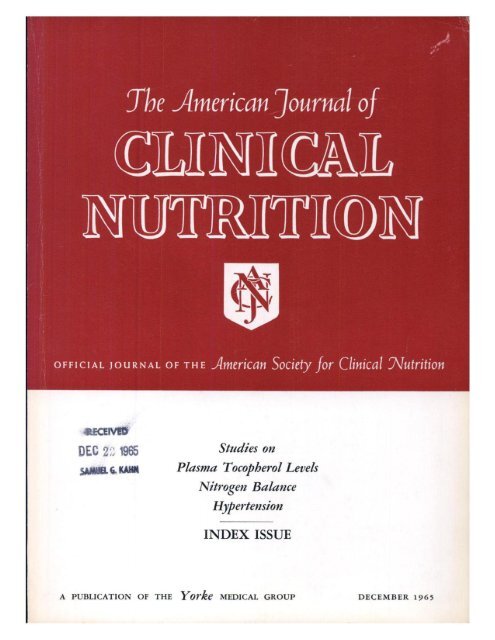多地点前瞻性妊娠队列中的母体维生素 D 状态、胎儿生长模式和不良妊娠结局。
IF 6.5
1区 医学
Q1 NUTRITION & DIETETICS
引用次数: 0
摘要
背景:很少有研究探讨母体维生素 D 状态和胎儿在整个孕期的生长模式。此外,母体维生素 D 状态对胎儿最佳生长和妊娠结局最为关键的妊娠时间点也不确定:我们的目的是研究孕期前三个月和后三个月母体维生素 D 状态是否与胎儿生长模式和妊娠结局相关:我们利用美国一项针对无阴道孕妇的多地点前瞻性队列研究的数据和样本进行了二次分析。我们测量了 351 名参与者在妊娠 6-13 周和 16-21 周时的血清 25- 羟维生素 D (25(OH)D)。在妊娠 16-21 周和 22-29 周时,我们通过超声波测量了胎儿的生长情况,并在新生儿出生时测量了其人体测量数据。我们利用身长、体重和头围的 Z 值构建了胎儿生长曲线,并计算了早产风险(结果:维生素 D 不足(25(OH)D 结论:孕期前三个月的 25(OH)D 与线性生长呈正相关。怀孕头三个月维生素 D 不足(25(OH)D本文章由计算机程序翻译,如有差异,请以英文原文为准。
Maternal vitamin D status, fetal growth patterns, and adverse pregnancy outcomes in a multisite prospective pregnancy cohort
Background
Few studies have examined maternal vitamin D status and fetal growth patterns across gestation. Furthermore, time points in pregnancy at which maternal vitamin D status is most critical for optimal fetal growth and pregnancy outcomes are uncertain.
Objectives
Our objective was to examine whether first and second trimester maternal vitamin D status are associated with fetal growth patterns and pregnancy outcomes.
Methods
We conducted a secondary analysis using data and samples from a multisite prospective cohort study of nulliparous pregnant females in the United States. We measured serum 25-hydroxyvitamin D (25(OH)D) for 351 participants at 6–13 and 16–21 weeks of gestation. Fetal growth was measured by ultrasound at 16–21 and 22–29 weeks of gestation, and neonatal anthropometric measures at birth. We constructed fetal growth curves using length, weight, and head circumference z-scores, and calculated risk of preterm birth (<37 wk) and small for gestational age (SGA). We examined outcomes across 25(OH)D concentrations assessed continuously, using Institute of Medicine (IOM) cutoffs (<50 compared with ≥50 nmol/L), and using exploratory cutoffs (<40, 40–59.9, 60–79.9, ≥80 nmol/L).
Results
Vitamin D insufficiency (25(OH)D <50 nmol/L) was prevalent in 20% of participants in the first trimester. Each 10 nmol/L increase in first trimester 25(OH)D was associated with a 0.05 [95% confidence interval (CI): 0.01, 0.10] increase in length-for-age z-score but was not associated with weight or head circumference. There were no differences in risk of preterm birth or SGA using IOM cutoffs; participants with first trimester 25(OH)D <40 compared with ≥80 nmol/L had 4.35 (95% CI: 1.14, 16.55) times risk of preterm birth. Second trimester 25(OH)D was not associated with fetal growth patterns or with pregnancy outcomes.
Conclusions
First trimester 25(OH)D is positively associated with linear growth. Low first trimester 25(OH)D (<40 nmol/L) is associated with a higher risk of preterm birth. Second trimester 25(OH)D is not associated with fetal growth or pregnancy outcomes assessed.
求助全文
通过发布文献求助,成功后即可免费获取论文全文。
去求助
来源期刊
CiteScore
12.40
自引率
4.20%
发文量
332
审稿时长
38 days
期刊介绍:
American Journal of Clinical Nutrition is recognized as the most highly rated peer-reviewed, primary research journal in nutrition and dietetics.It focuses on publishing the latest research on various topics in nutrition, including but not limited to obesity, vitamins and minerals, nutrition and disease, and energy metabolism.
Purpose:
The purpose of AJCN is to:
Publish original research studies relevant to human and clinical nutrition.
Consider well-controlled clinical studies describing scientific mechanisms, efficacy, and safety of dietary interventions in the context of disease prevention or health benefits.
Encourage public health and epidemiologic studies relevant to human nutrition.
Promote innovative investigations of nutritional questions employing epigenetic, genomic, proteomic, and metabolomic approaches.
Include solicited editorials, book reviews, solicited or unsolicited review articles, invited controversy position papers, and letters to the Editor related to prior AJCN articles.
Peer Review Process:
All submitted material with scientific content undergoes peer review by the Editors or their designees before acceptance for publication.

 求助内容:
求助内容: 应助结果提醒方式:
应助结果提醒方式:


